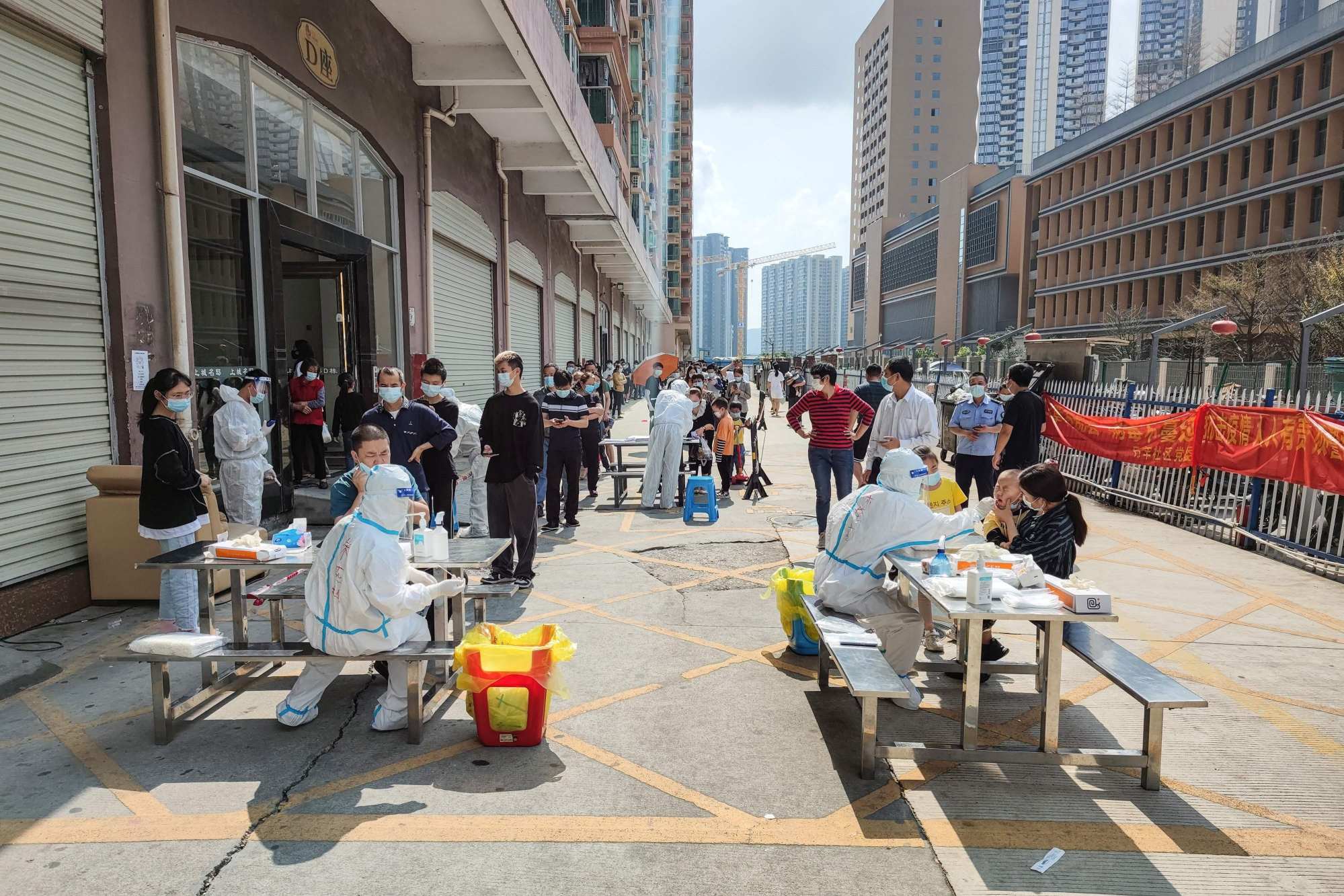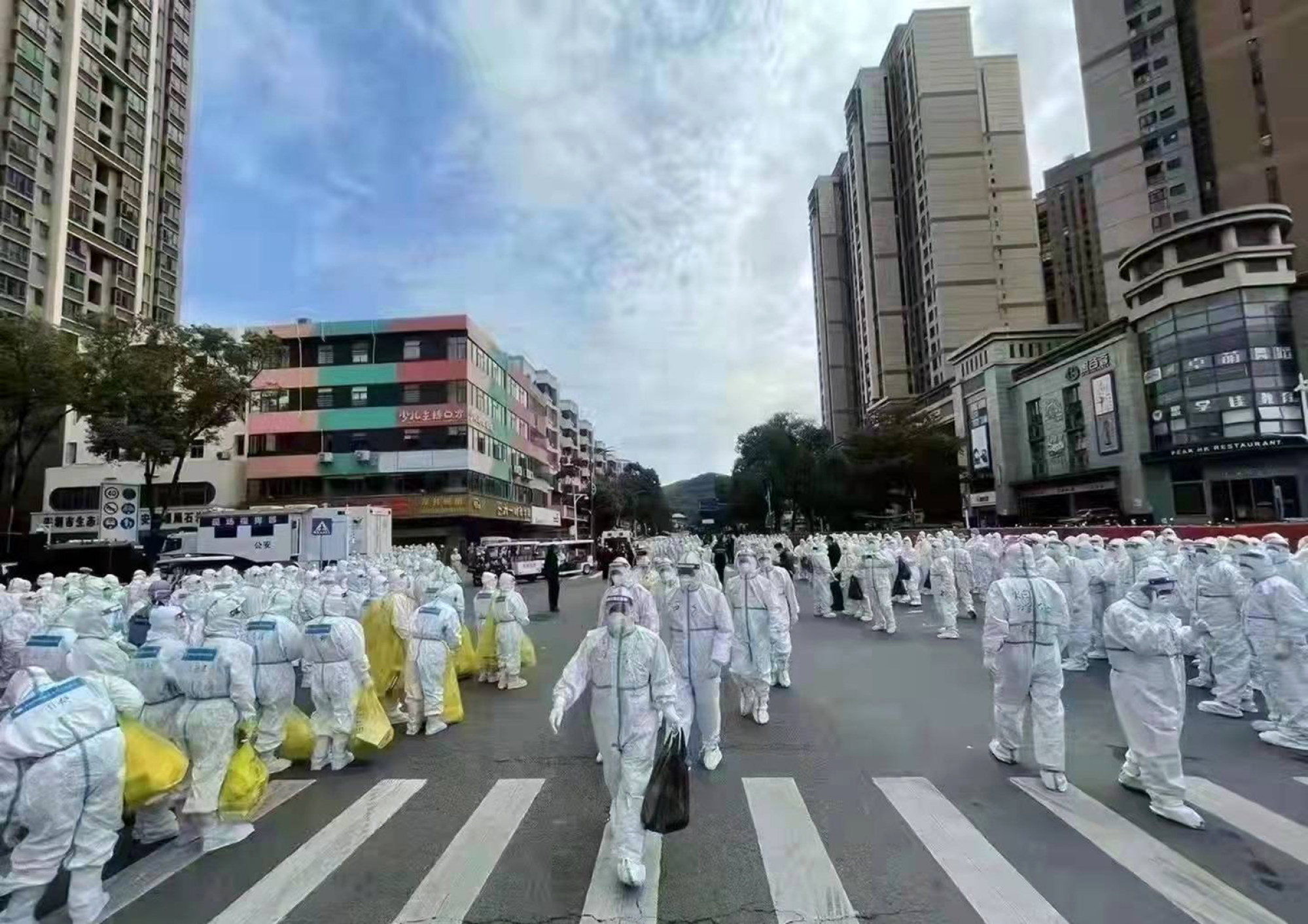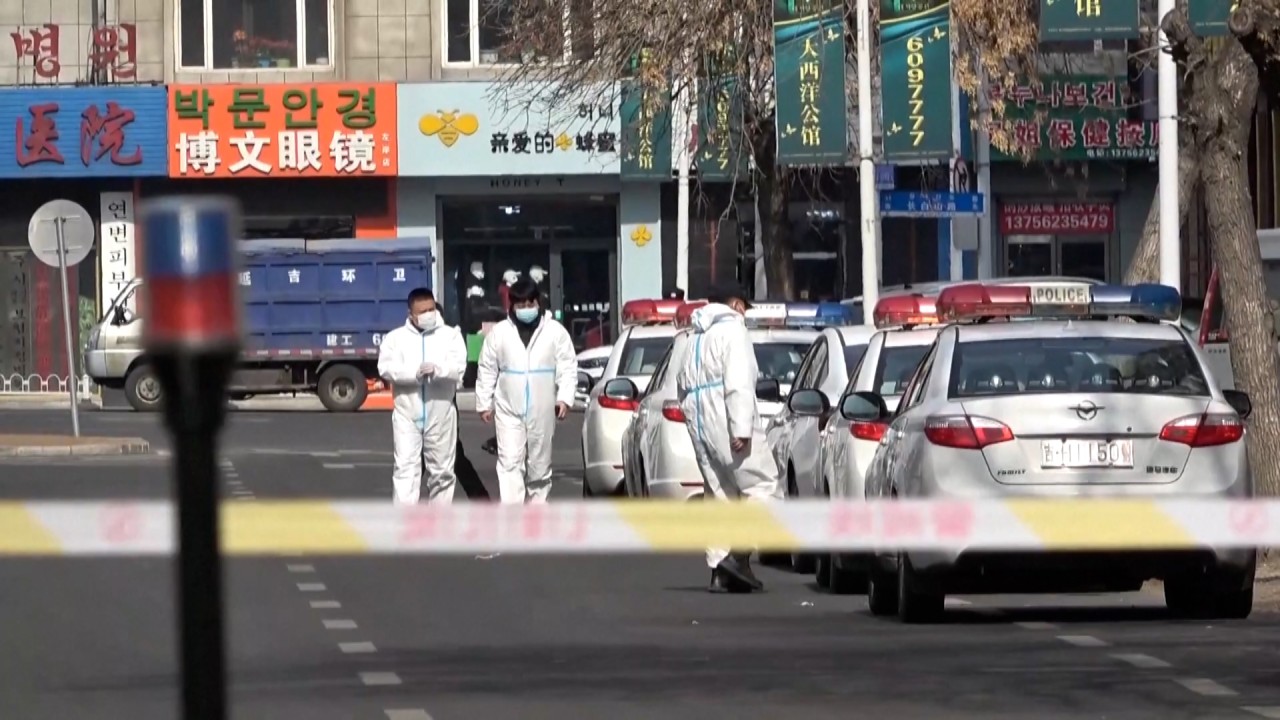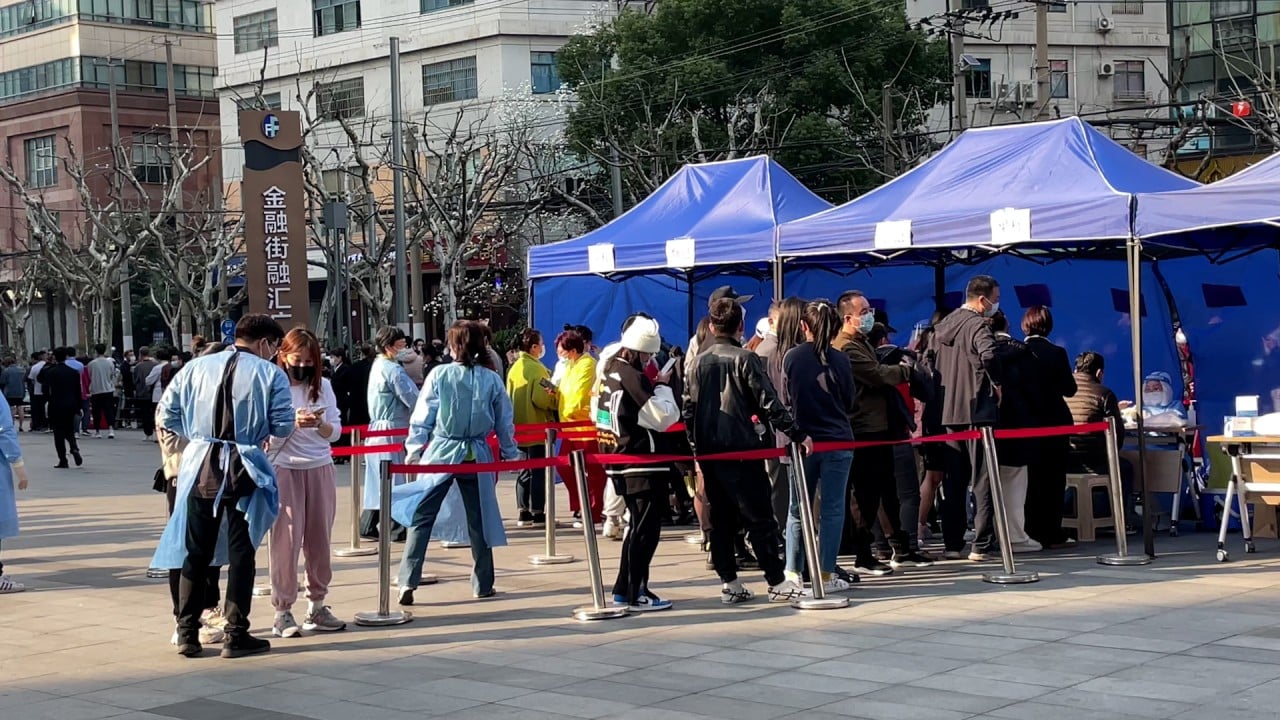
Coronavirus: Hong Kong should learn from Shenzhen’s lockdown by using clear and swift dissemination of information, observers urge
- City leader Carrie Lam rebuts direct comparison between Hong Kong and Shenzhen, cites differences in systems, resources and manpower mobilisation
- Shenzhen residents in week-long lockdown have to stay at home except to undergo testing three times a week, with shops closed and streets mostly empty
Hong Kong leader Carrie Lam Cheng Yuet-ngor rebutted a direct comparison between the two cities hours after the lockdown in the mainland Chinese city was in full force, noting the differences in systems, resources and ability to mobilise manpower.
“In densely populated Hong Kong, queues during mass testing might spark concern about risks of cross-infection,” she said on Monday.
“For us to learn from Shenzhen and conduct three universal tests in a few days, I’m afraid we are not yet able to do so.”

Hong Kong has been gripped by the Omicron-fuelled outbreak since late December, but officials stopped short of making clear whether citywide testing, accompanied by a stay-at-home order, would go ahead for its 7.5 million residents. The city logged 26,908 new infections and 286 fatalities on Monday.
Neighbouring Shenzhen announced on Sunday night a week-long citywide lockdown for its residents after reporting 66 new infections. Virus cases across the mainland soared to nearly 3,400.
On the first day of Shenzhen’s lockdown, streets were largely empty as public transport was suspended. All shops except supermarkets, pharmacies, medical institutions and eateries providing takeaways were ordered to close.
Residents were asked to confine themselves at home, unless they followed the assigned time slots to undergo three rounds of compulsory testing within the week. Those wishing to leave or enter Shenzhen must produce a negative nucleic test result within 24 hours.
The municipal government said essential operations including water, electricity, fuel and telecommunications, as well as supplies to Hong Kong, would continue.
But Hong Kong Land Transport Council chairman Stanley Chiang Chi-wai warned that adverse impacts on supply could soon be felt as about 80 per cent of the city’s 8,000 active cross-border truck drivers could not enter Shenzhen because of the new restrictions.
Chiang said the remaining drivers had to queue for an average of eight to 10 hours before handing over their trucks at the border connection points to their mainland counterparts.
A mainland source told the Post the tripartite coordination group chaired by Xia Baolong, director of the Hong Kong and Macau Affairs Office, was planning to boost railway and sea transport capacity to ensure daily supplies to Hong Kong were met.

After the Shenzhen lockdown was announced, photos circulating on the internet on Sunday night showed supermarkets crowded with residents stocking up on food and necessities, while some employees rushed back to offices to make arrangements to work from home.
Hongkonger Jovy Wong told the Post she rushed to return to Hong Kong from Futian district via Shenzhen Bay checkpoint, a major land crossing which remained open during the pandemic, on Sunday night through a quarantine-free scheme.
“I couldn’t find any information about whether I could still take a taxi or private car ride to the border crossing when the lockdown began, so I decided to rush back at night,” she said, adding that many others had taken their queries to social media.
Shanghai, Shenzhen keep stock markets open even amid Covid lockdowns
The Shenzhen government and its health commission separately released a detailed article on Monday titled “How to live a good, slow life for seven days?”, which sought to address residents’ queries and said the Shenzhen Stock Exchange, financial institutions and certain banking services would continue with minimal manpower during the lockdown.
Residents were encouraged to report incidents of price gouging or unreasonable requests by employers.
Companies inside industrial zones under a “closed-loop” system could still operate, as long as they fulfilled stringent anti-epidemic requirements.
The severity of stay-home orders was dependent on the risks of the areas people lived in.
According to notices issued by subdistrict offices, residents in “sealed-off zones” must be confined at home during the lockdown and hand over specimens to a door-to-door collection service.

Those in the “control zones” may go to a nearby testing station but are otherwise not allowed to leave their residential estates.
Shirley Han, a Shenzhen resident in Bao’an district, said she completed her first nucleic test in an orderly manner on Monday at a booth set up near her flat. It was manned by representatives of subdistrict offices and volunteers from a bank, she said.
“We need to present negative results valid in 24 hours whenever we enter a shopping mall. I’ve been used to this testing routine for more than a month,” she told the Post, adding that results of her previous tests usually arrived in half a day.
Some Shenzhen residents point finger at Hong Kong over Covid-19 lockdown
Pro-Beijing heavyweight Tam Yiu-chung said he was sceptical about Lam’s remarks on the challenges of a mainland-style lockdown in Hong Kong.
“What can be an excuse when a city of nearly 20 million could get it done?” he said.
He conceded that Hong Kong lacked a micromanagement system at district levels and an extensive network of volunteers to be mobilised during a crisis.
However, he said Hong Kong officials should learn from Shenzhen’s clear and swift dissemination of information. Notices from the municipal government show that each district in Shenzhen runs its own hotlines to address residents’ medical and legal queries.
Jason Poon Chuk-hung, chief analyst of Hong Kong Strategic Solutions, said Shenzhen’s abrupt but organised lockdown was a sharp contrast to the Hong Kong government’s indecisiveness.
He urged Lam’s administration to learn from its mainland counterparts in carrying out mass testing efficiently when the local daily caseload dropped to three digits, and rebuild district-level aid networks.
According to a Post check of stores in Hong Kong on Monday, prices of food imported from the mainland had gone up slightly.
Hong Kong authorities report 26,908 new coronavirus cases and 286 more deaths
A 26-year-old manager of a fruit store in Tai Po, who gave his name as Yung, said they had to pay more for wholesale stock from Yau Ma Tei Fruit Market.
“We had to pay an extra HK$20 (US$2.55) to HK$30 for sourcing apples today,” Yung said.
A 50-year-old female employee at a grocery store in Tai Po Market, who gave her name as Lau, said they received significantly less stock of mainland-imported vegetables on Monday.
Additional reporting by Cannix Yau, William Zheng, Gigi Choy and Jess Ma



